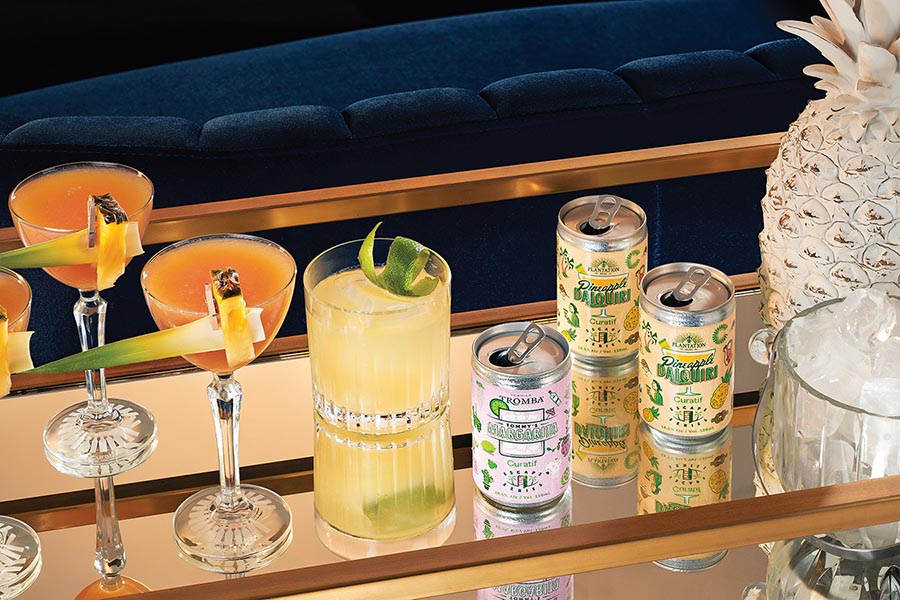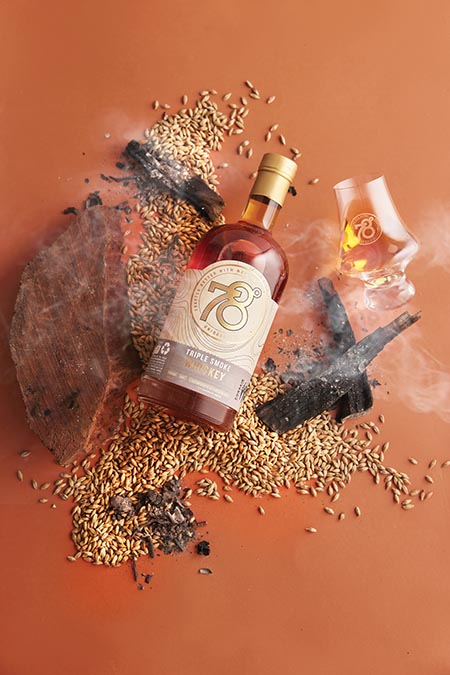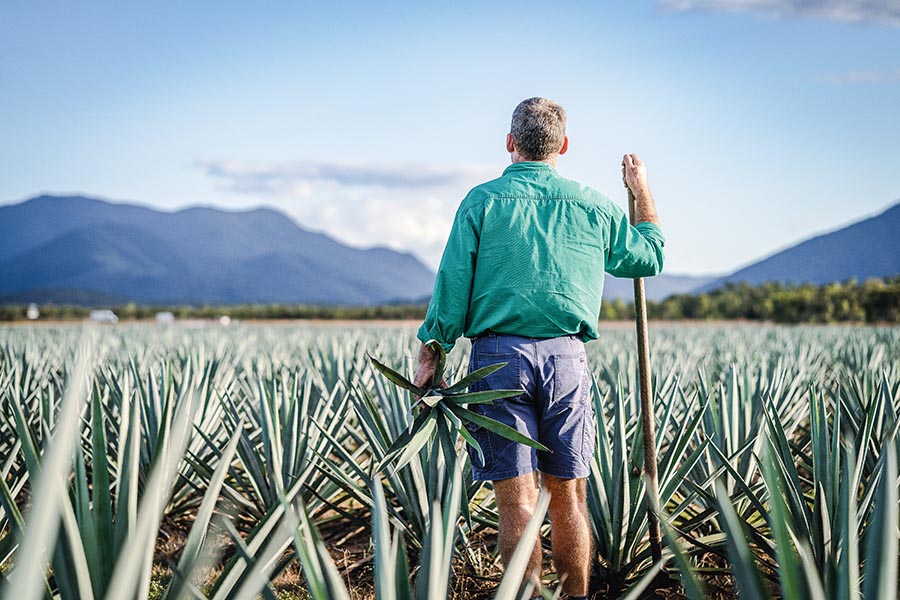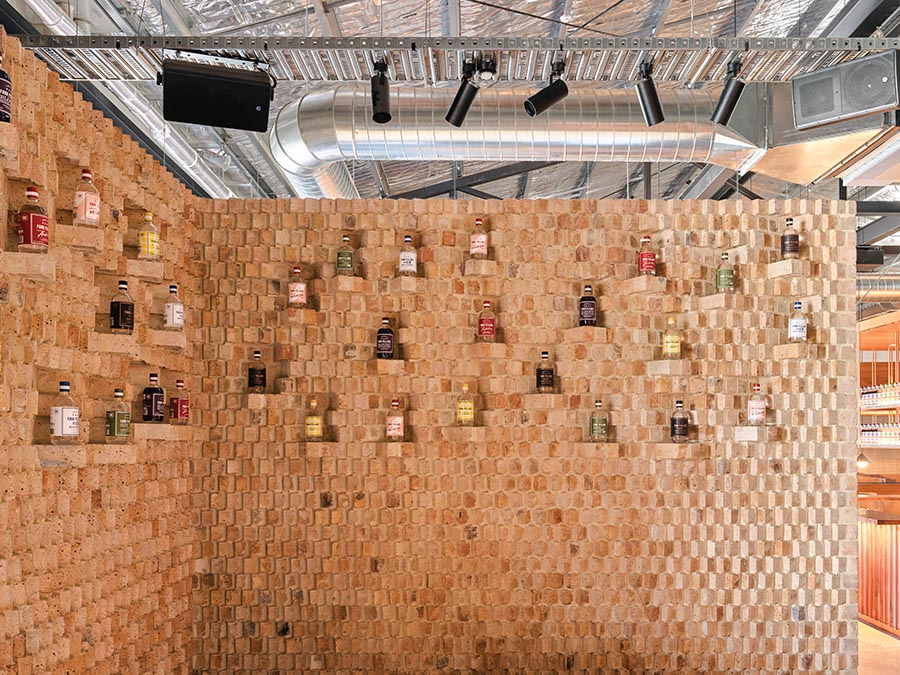The craft spirits industry continues to grow in both Australia and New Zealand across all categories. While whisky continues to dominate and gin brands are still popping up, the possibilities of rum, brandy, and even agave spirits are being explored. Here are some of the biggest trends of 2022.
Ready to Drink
The pandemic and subsequent lockdowns increased consumers’ interest in making cocktails at home, and as a result, more ready-to-drink cocktails came on the market. The convenience of canned cocktails suits Australians’ love of the outdoors, and there are now a wide range of quality products available.
One is Curatif, which launched in 2019 and is the most awarded canned cocktail range in the world, including the RTD Producer of the Year trophy at the 2022 International Wine and Spirits Competition. Founded by Matt Sanger in Melbourne, the company produces almost a dozen varieties of 130 ml canned cocktails featuring recognizable brands such as Archie Rose (Sydney), Plantation, and Tromba.
Starward Whisky, also based in Melbourne, joined the RTD party with three variants that eschewed the traditional highball to offer some really tasty flavor choices: whisky paired with tonic and ruby grapefruit, finger lime, or ginger beer and zesty orange, which won a Gold Medal at the 2022 Spirits Business Pre-Mixed & RTD Masters.
Four Pillars, Australia’s most successful gin brand, also released three RTDs: Rare Dry Gin & Tonic, Bloody Shiraz Gin & Tonic, and Fresh Yuzu Gin & Soda.
No and Low
No and low alcohol drinks sales were up by 83% through Dan Murphys, Australia’s largest beverage retailer. There are now more than a dozen non-alc “spirits” producers in Australia, including Lyre’s, which is available in 50 export markets and has a market value of AUD$500 million. New brands are still entering the space. In 2022, Four Pillars launched Bandwagon Dry and Bandwagon Shiraz, alcohol-free versions of their Rare Dry and Bloody Shiraz gins, and Manly spirits also released a zero-alcohol version of their Lilly Pilly Pink gin.
Rum

While spiced rum dominates the category in Australia, there is plenty of excitement for the future. Australia’s huge cane industry offers distillers the opportunity to develop a new style of agricole-style cane spirit. With fields of cane running for 1,300 miles from New South Wales to Queensland through different terrains and climate, terroir-related differences offer lots of variety for consumers to enjoy, such as Devil’s Thumb Distillery (Queensland) Australian Cane Spirit and Husk Distillers (New South Wales) Pure Australian Agricole.

Whisky
Outside of Tasmania, which largely produces whisky in the Scottish single malt style, there is increasing innovation to broaden what “Australian” whisky means. 78 Degrees near Adelaide began this trend in 2018 with its Native Grain Whiskey, the first whisky in the world to be made with Australian native cereal grains. It is distilled from a combination of barley and hand-harvested weeping grass, cultivated by Indigenous Australians for tens of thousands of years.
Different smoking techniques are showing alternatives to traditional peat. 78 Degrees Triple Smoked Whiskey is a collaboration with Corsair Distillery in Nashville, Tennessee, following their visit to Adelaide. 78 Degrees bought peated Scottish malted barley and then combined it with a portion of their unmalted Mallala barley which had been soaked and then smoked using Red Gum. Corsair took the same barley and smoked it using American Cherrywood. The three types of barley were married together and then mashed at the same time before being run through the still in a single batch. Archie Rose Distillery has taken a similar approach, experimenting with smoking their barley with red gum and string bark.
Agave

Australians are now the world’s third-biggest consumer of tequila per capita, behind the U.S. and Mexico. With a climate similar to the agave growing regions of Mexico, Australia is well placed to move into this category as a producer as well as a consumer. Top Shelf International took over a neglected experimental farm in Queensland that had 2,000 plants with the ambition of creating Australian agave spirits. They now have almost half a million plants, including 200,000 in their nursery with plans to release “Act of Treason” in 2024. Other smaller distilleries have entered the market in recent years, and Australian agave is set to become its own category.
Sustainability

Distillers are increasingly taking the impact of spirits production more seriously. In 2022, Four Pillars became Australia’s first carbon neutral distillery with the opening of Healesville 2.0. They used materials including recycled and upcycled concrete and bricks and pineapple “leather” upholstery in the construction of their expanded distillery. Furniture is all locally sourced and solar power panels line the roof. Gin is piped directly into the main bar through copper pipes to reduce glass waste, and bottled tonic usage has been reduced by using tonic in kegs. These two initiatives alone save 29 tons of glass per year. The whole site is enclosed by a copper “veil” made from 1650 m of raw copper tubing, which works as a natural heat exchange to reduce energy consumption.
B Corp status has become an aim for several distillers. The designation shows that a business is meeting high standards of verified performance, accountability, and transparency on factors from employee benefits and charitable giving to supply chain practices and input materials. In order to achieve certification, a company must demonstrate high social and environmental performance.
Applewood Distillery was the first in Australia to achieve this status, and in 2022, Cape Byron Distillery in New South Wales was also awarded the designation, while Earp Distillery is working toward accreditation. In addition, distilleries like Animus Distillery, Darling Distillery, and Manly Spirits have introduced refill stations and other recycling schemes.
New Zealand
New Zealand Spirits writer and consultant Tash McGill offered up some insights into the New Zealand market, which, while significantly smaller (fewer than 100 distilleries compared to 400+ in Australia), shows similar trends.
Local and native is a dominant trend in New Zealand spirits, driven by the use of native bush peppers and plants in the quest for giving the liquid a unique sense of place. This is extending into botanical rums and the use of native wood for cask making.
The protection of natural resources is increasingly prominent, with distilleries quickly moving to sustainable production methods. This is impacting everything from label printing, glass sourcing, and distribution models as well as the distilleries themselves.
New Zealand whisky is a large consumer trend with distilleries exploring various wine finishes. Pinot noir casks are popular, but Waiheke Whisky’s new chardonnay cask release highlights the innovation in this area. The use of alternative grains and the impact of maturation in the country’s varying climates is suggesting that New Zealand whisky will be as regionally diverse as Scotland.








